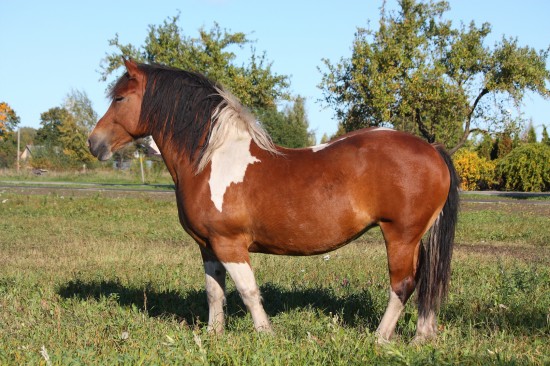
You should also be aware that there are two types of Cushings disease. The pituitary Cushings disease and the Adrenal Cushings disease are the two types. Both have the excess steroid mentioned above that will throw off the other systems; however it is just the different location the disease starts in that will offer which type your dog may have.
Cushings disease is most common in Toy Poodles, German Shepherds, Dachshunds, Labrador Retrievers, and some terrier breeds. Although these dogs more commonly get the disease, you will find that any dog is susceptible to the illness. Cushings disease is also known as hyperadrenocorticism. Basically Cushings disease is a chronic overproduction of glucocorticoid in the body. This hormone is produced in the pituitary gland. Basically is works to stimulate the adrenal gland into producing the steroid hormone. We have mentioned breeds most susceptible to the disease, so we should also mention that middle age and older dogs are also targets for the disease. Most often the disease is found to be concurrent with dogs that have diabetes mellitus.
Cushings disease is not very common in a lot of dog breeds; however there are certain dogs that are more susceptible to the illness. When you are considering dog care it is important to consider all aspects and what illnesses may affect the dog breed you have. Therefore in this article we are going to look at what Cushings disease is and how it can affect your dog. We will also discuss some of the dog breeds more common to having the disease.
There are also a few treatment options that you have available to you. In some cases there is a surgical option based on what has caused the malfunction of the gland. In some cases there can be a tumor that has formed giving rise to the change in hormone and steroid levels. This is usually something that must be surgically removed. Lysodren is a drug treatment that can help to regulate the pituitary gland. Your vet may choose Ketoconazole, L- deprenyl, or trilostane depending on the type of the Cushings disease and which may be more affective treatment. These drug treatments will vary depending on the severity of the problem as well.
Symptoms of the disease can very and often look like other symptoms of diseases dogs can get. The reason for this is that the pituitary and adrenal glands have a lot of functions for regulating the body, and when they malfunction other aspects of the body soon follow depending on the type of problem. Therefore it is important to know all of the symptoms to better help you understand the disease and what the early signs are. When the hormone levels rise there are going to be lesions that form on the skin. These lesions can actually take quite a bit of time to appear, so it is also important to look for the other symptoms. Most often you will find your dog has an increased water consumption and need to urinate with Cushings disease. You will also find the appetite tends to increase. This can be difficult to diagnose because it is usually a sign of good health. So you will want to look for other symptoms that could occur such as abdominal enlargement, hair loss and a thinning to the skin. There are also excess panting, urinary tract infections, loss of reproductive abilities, and other symptoms.
 Are Some Breeds Of Dog Particularly Prone To Osteochondritis Dissecans?
Are Some Breeds Of Dog Particularly Prone To Osteochondritis Dissecans?
 Should You Consider Getting Another Pet After The Loss Of An Animal?
Should You Consider Getting Another Pet After The Loss Of An Animal?
 Looking After The Older Horse
Looking After The Older Horse
 How Do Pets Deal With The Loss Of A Limb?
How Do Pets Deal With The Loss Of A Limb?
 How To Change Your Horses Feed Safely
How To Change Your Horses Feed Safely
 Should You Consider Breeding From Your Tarantula?
Should You Consider Breeding From Your Tarantula?
 Things to Consider Before Buying the Ultimate Chicken Runs
Things to Consider Before Buying the Ultimate Chicken Runs
Things to Consider Before Buying the Ultimate Chicken Runs
Things to Consider Before Buying the Ultimate Chicken Runs
 Species Of Turtle
Species Of Turtle
Species Of Turtle
Species Of Turtle
 How To Greet A Cat In Cat Language
How To Greet A Ca
How To Greet A Cat In Cat Language
How To Greet A Ca
 Try Treibball With Your Dog - The Newest Canine Sport!
Try Treibball Wit
Try Treibball With Your Dog - The Newest Canine Sport!
Try Treibball Wit
 Ten Picnic And Barbecue Foods Your Dog Should Not Eat
Ten Picnic And Ba
Ten Picnic And Barbecue Foods Your Dog Should Not Eat
Ten Picnic And Ba
Copyright © 2005-2016 Pet Information All Rights Reserved
Contact us: www162date@outlook.com